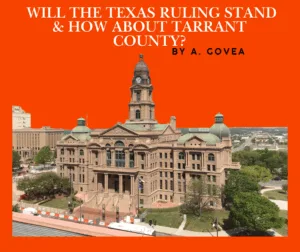Aug 7, 2025
UCSF infectious diseases specialist Dr. Peter Chin-Hong says there is no scientific evidence proving that mRNA vaccines are dangerous. In fact, he says, they have been very effective around the globe in combatting Covid-19.

Editor’s note: On Aug. 5, Health and Human Services Secretary Robert F. Kennedy Jr., announced a $500 million cut to grants focused on mRNA vaccine research and development. “We’re terminating 22 mRNA vaccine development investments because the data show these vaccines fail to protect effectively against upper respiratory infections like COVID and flu. We’re shifting that funding toward safer, broader vaccine platforms that remain effective even as viruses mutate,” said Kennedy in a statement announcing the cuts.
The move was met with alarm by many members of the scientific and medical community, with many decrying it as a dangerous public health decision. In an Aug. 7 interview with American Community Media, Dr. Peter Chin-Hong, infectious diseases specialist at the University of California, San Francisco, refuted Kennedy’s statements on mRNA vaccines, noting they have been very effective in managing the Covid-19 pandemic. Here are excerpts from the interview, lightly edited for brevity.
Dr. Chin-Hong, how effective are mRNA vaccines in managing the COVID-19 pandemic?
PCH: mRNA vaccines have been tremendously effective in preventing the outcomes we care about most: serious disease, hospitalization, and death. In the U.S. alone, over 1.2 million people have died from COVID-19. But mRNA vaccines are estimated to have saved at least 3 million lives—more than double the death toll. Globally, they’ve saved an estimated 20 million lives. Over 15 billion doses have been delivered, making mRNA vaccines the most commonly used worldwide during the pandemic.
Some people say they got vaccinated and still got COVID. Is that expected?
Yes. The goal of the vaccine is not to prevent infection entirely, but to prevent serious illness. mRNA vaccines are not “sterilizing” vaccines; they won’t necessarily prevent the virus from entering your body or causing mild symptoms like a sore throat or runny nose. However, they train your immune system—through antibodies and memory T and B cells—to kick out the virus before it causes pneumonia, organ damage, or other severe complications.
Secretary Kennedy has called mRNA vaccines dangerous. What’s your response?
I understand the concern—particularly in the early days. But now, after about five years of global use in billions of people, we have an excellent safety record. The side effects we’ve seen have largely been minor, such as inflammation. There’s no strong scientific evidence that mRNA vaccines cause deaths. On the contrary, they’ve saved millions of lives.
What’s the end game here in targeting mRNA vaccines?
It’s not just about mRNA vaccines—it’s about sowing distrust and confusion around all vaccines. If you can inject doubt into the safety or usefulness of one type of vaccine, it doesn’t take much to create uncertainty about all vaccines. That undermines decades of public health progress in fighting infectious diseases globally.
How will the proposed $500 million federal cut affect vaccine development and distribution?
That cut could jeopardize around 22 projects. It comes on top of a $600 million bird flu vaccine contract that’s also at risk. Scientific progress builds on prior work, so delaying vaccine research by even a few years can set us back decades. mRNA research also applies to other fields—like cancer and autoimmune diseases—not just infectious disease. These cuts threaten to slow or even halt that momentum.
What’s the role of BARDA, and why is cutting its funding significant?
BARDA (Biomedical Advanced Research and Development Authority) is a part of HHS and is tasked with preparing for public health emergencies, including pandemics. Cutting funding to BARDA weakens our national security. mRNA vaccines are nimble—they can be created within weeks in response to emerging threats like a mutated virus or bioweapon. Traditional vaccines can take a year or more. Defunding this work puts us at risk during the next pandemic, which most experts believe is inevitable.
So, mRNA vaccines help us respond faster to new COVID variants or other viral threats?
Absolutely. With new variants or subvariants appearing every three to six months, we need flexible vaccine platforms. mRNA allows scientists to “cut and paste” genetic code quickly, match what’s circulating, and trigger an immune response. It’s a much faster and more effective approach than older technologies.
Can the private sector and industry fill the gap if federal funding is cut?
A successful response requires both public and private sectors. Neither can do it alone. COVID showed us that global collaboration is essential. Infectious diseases don’t respect borders, and a robust public-private partnership is the only way we can effectively respond to emerging threats.
Secretary Kennedy suggested returning to whole cell vaccines. Are those a viable alternative?
Whole cell vaccines are older technology and generally cause more side effects. For example, the old pertussis (whooping cough) vaccine was a whole-cell vaccine and caused more adverse reactions, which is why we moved away from it. They’re also harder and slower to make—sometimes taking over a year—and potentially more expensive. Going back to whole-cell technology is like going back in time.
Many people are confused about COVID-19 vaccine eligibility. Who is still eligible?
What’s not expected to change is that anyone 65 and older, regardless of health conditions, will remain eligible. That’s true in the U.S. and many other countries. Those under 65 with comorbidities or immunocompromised conditions are also expected to stay eligible. For other groups like pregnant people and children, it will likely be a case-by-case decision made with healthcare providers.
With Medicaid cuts on the horizon, will people still be able to get vaccines, especially children?
The Vaccines for Children program should continue. It provides vaccines for those under 18 regardless of ability to pay or insurance, as long as the vaccine is recommended by the Advisory Committee on Immunization Practices and the Centers for Disease Control and Development. For others, especially adults in lower-income brackets, access may depend on safety-net programs in their state. But this is an area of real uncertainty. Funding cuts could seriously jeopardize vaccine access.
Are you confident the new vaccine advisory board will maintain strong vaccine policies?
I’m not fully confident. It’s unclear if the new seven-member advisory board will follow the same scientific guidance as before. That said, I expect robust debate among public health professionals. But even with good information, if people can’t afford or access vaccines, we’re in trouble—not just for COVID, but also for measles, pertussis, flu, and future threats.
Final thoughts?
It’s not just about mRNA vaccines—it’s about the future of trust in all vaccines. Misinformation and disinformation are creating confusion, and I worry that even if programs are restored, the long-term damage to public confidence could take years to repair. That threatens our ability to prevent disease and protect public health.






